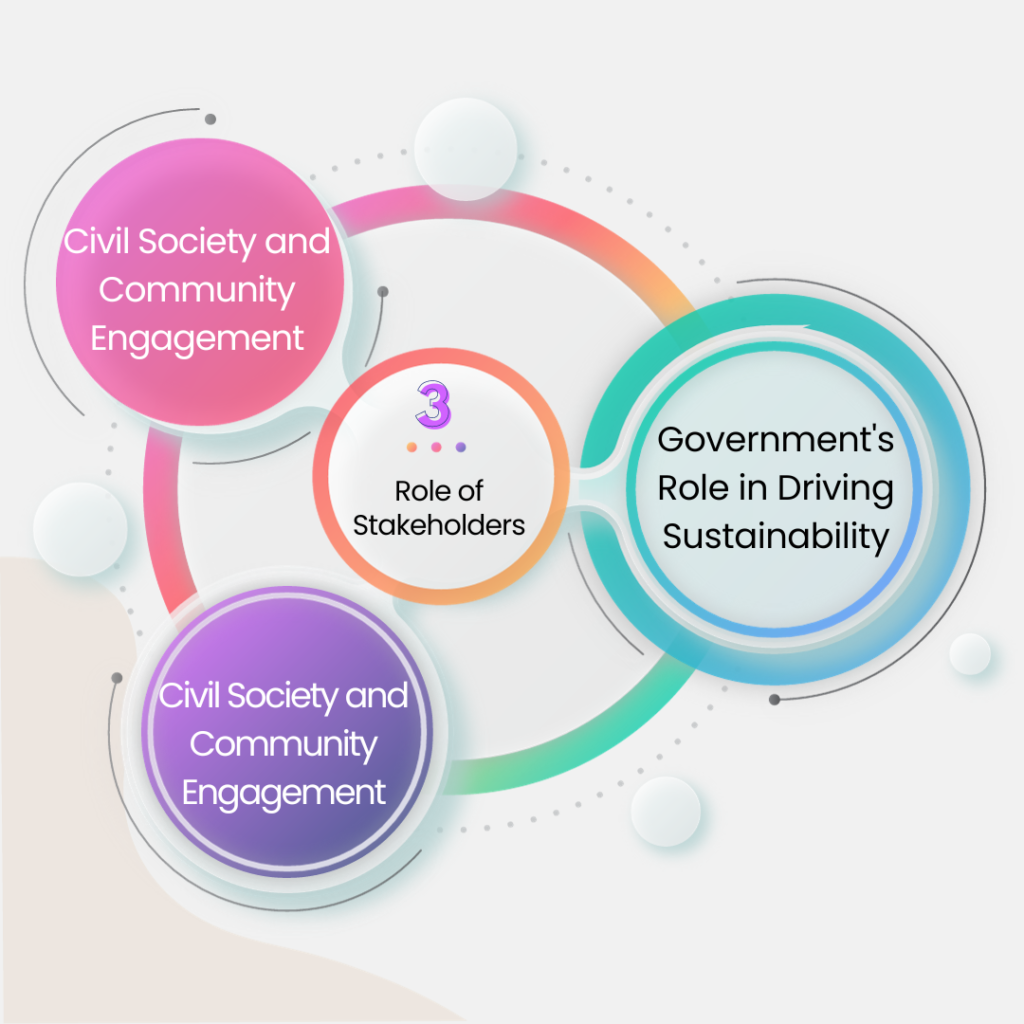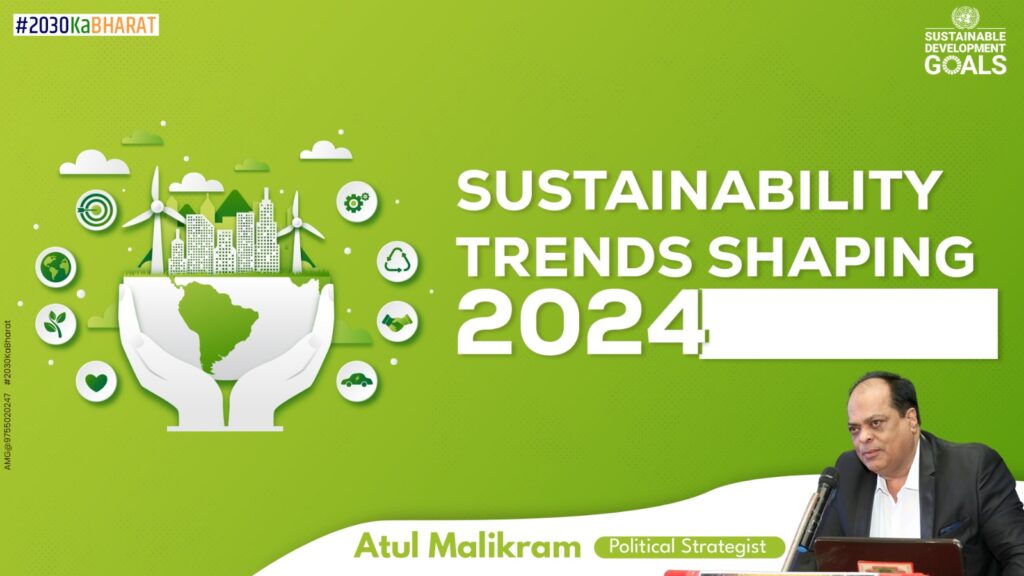In an era marked by unprecedented challenges, sustainability has become the linchpin for global progress. As we step into 2024, the urgency of addressing environmental, social, and economic issues is more apparent than ever. This article delves into the specific sustainability trends shaping India in 2024, providing insights into the complex challenges the country faces and the strategies for navigating them.
Current State of Sustainability in India
Overview of India’s Challenges
India, with its burgeoning population and rapid industrialization, faces multifaceted challenges. Air pollution, water scarcity, and the need for inclusive economic growth are just a few of the critical issues demanding attention. Despite these challenges, India has made significant strides in embracing sustainable practices.
Key Sustainability Initiatives and Policies
Government initiatives, such as the Swachh Bharat Abhiyan and the National Action Plan on Climate Change, underscore India’s commitment to sustainability. The introduction of the E-Waste Management Rules and the National Clean Air Programme reflects a proactive approach toward environmental conservation.
Assessment of Progress and Gaps
While progress has been made, gaps persist. The State of India’s Environment Report and the Global Hunger Index provide valuable insights into the existing challenges. It is imperative to address these gaps comprehensively to build a resilient and sustainable future.
Key Sustainability Trends in 2024
Climate Action
India’s ambitious climate targets, as outlined in the Nationally Determined Contributions (NDCs), indicate a commitment to mitigating climate change. The expansion of renewable energy capacity and efforts to increase green cover are pivotal in achieving these targets.
Circular Economy
The adoption of circular economy principles is gaining traction. Companies are redesigning products, optimizing resources, and embracing sustainable supply chain practices. Case studies of successful circular economy models, such as those employed by Tata Motors and ITC Limited, exemplify the potential for positive change.
Social Impact
In 2024, there is a growing emphasis on social impact initiatives. Inclusive business models are being championed, empowering marginalized communities and fostering economic inclusivity. The Corporate Social Responsibility (CSR) trends in India, documented in reports by organizations like CII and KPMG, highlight the transformative power of socially responsible business practices.

Technology and Innovation
Sustainable technology trends are reshaping industries. From electric mobility to precision agriculture, technology is proving to be a catalyst for positive change. Reports from the NITI Aayog and the Indian Council for Research on International Economic Relations (ICRIER) shed light on the transformative potential of technology in achieving sustainability goals.
Challenges and Opportunities
Identifying Key Challenges
While progress is evident, challenges persist. The State of India’s Air report and the WaterAid’s Water Scarcity Atlas underscore the severity of environmental challenges. Balancing economic growth with sustainability remains a delicate task, requiring nuanced strategies and collaborative efforts.
Opportunities for Businesses, Government, and Communities
Amid challenges lie opportunities. The circular economy presents economic benefits for businesses, while government incentives for sustainable practices create a conducive environment. Engaging communities through awareness campaigns and participatory decision-making processes can amplify the impact of sustainability initiatives.
Balancing Economic Growth with Sustainability
Striking a balance between economic growth and sustainability is crucial. The McKinsey report on “Green Growth in India” provides insights into how a sustainable development path can be economically viable. The shift toward a green economy is not only a moral imperative but also a strategic economic choice.
Role of Stakeholders
Government’s Role in Driving Sustainability
Government policies and regulatory frameworks play a pivotal role in shaping the sustainability landscape. The Economic Survey of India and the Environmental Performance Index shed light on the effectiveness of current policies. A proactive government approach is vital for creating an enabling environment for sustainable practices.
Corporate Responsibility and Sustainable Business Practices
Businesses are increasingly recognizing the importance of integrating sustainability into their core operations. The Dow Jones Sustainability Indices and the Sustainability Reporting Standards showcase the global shift towards responsible business practices. Corporate responsibility is not just a moral obligation; it is a strategic imperative for long-term success.
Civil Society and Community Engagement
The involvement of civil society and communities is instrumental in the success of sustainability initiatives. Reports from Oxfam India and the Centre for Science and Environment highlight the role of grassroots movements in driving positive change. Engaging communities ensures that sustainability initiatives are contextually relevant and inclusive.

Case Studies
Highlighting Successful Sustainability Projects
Examining successful sustainability projects provides valuable insights. The “Ujjwala Yojana” for clean cooking fuel and the “Clean Ganga Mission” exemplify the transformative impact of targeted initiatives. Case studies provide tangible evidence of what can be achieved with strategic planning and concerted efforts.
Case Study 1: Ujjwala Yojana – Transforming Lives through Clean Cooking Fuel
The Ujjwala Yojana, launched by the Government of India in 2016, stands as a beacon of success in addressing a crucial aspect of sustainability—clean and accessible cooking fuel. The initiative aimed to provide LPG (liquefied petroleum gas) connections to households below the poverty line, predominantly in rural areas.
Prior to the Ujjwala Yojana, a significant portion of India’s population relied on traditional biomass fuels like wood and dung cakes for cooking. Apart from contributing to deforestation, the use of these fuels had severe health implications due to indoor air pollution. Recognizing these challenges, the Ujjwala Yojana was conceived to promote clean energy adoption, improve health outcomes, and reduce the environmental impact of traditional cooking practices.
The impact of the Ujjwala Yojana has been transformative. Millions of households across India have benefited from the scheme, with a notable improvement in indoor air quality and a reduction in respiratory illnesses. The initiative has also contributed to the country’s commitment to sustainable development goals, particularly in ensuring access to clean energy (SDG 7) and promoting good health and well-being (SDG 3).

Case Study 2: Clean Ganga Mission – Revitalizing India’s Holiest River
The Clean Ganga Mission, also known as Namami Gange, is a comprehensive initiative launched by the Government of India in 2014. The project’s primary objective is to rejuvenate and restore the Ganges River, a lifeline for millions of people and a symbol of cultural and spiritual significance.
The Ganges, while revered, had been grappling with severe pollution due to industrial effluents, untreated sewage, and other sources of contamination. The Clean Ganga Mission was conceived to address these issues comprehensively, with a focus on both pollution control and conservation of the river ecosystem.
Since its inception, the Clean Ganga Mission has made significant strides in improving the health of the Ganges. The construction of sewage treatment plants, river surface cleaning machines, and the promotion of eco-friendly cremation practices are among the key interventions. Reports indicate a reduction in pollution levels, and the initiative has garnered international attention for its holistic approach to river conservation. The Clean Ganga Mission aligns with several SDGs, including Clean Water and Sanitation (SDG 6) and Life Below Water (SDG 14).

Lessons Learned and Replicable Models
Identifying lessons from successful projects is essential for scaling up sustainable practices. Replicable models, such as the waste management practices in Alappuzha, Kerala, showcase the potential for widespread adoption. Learning from both successes and failures is crucial for continuous improvement.
Future Outlook
Anticipated Trends Beyond 2023
Looking beyond 2024, several trends are likely to shape India’s sustainability landscape. The role of artificial intelligence in environmental monitoring and the potential for regenerative agriculture are areas to watch. Reports from the World Economic Forum and the Intergovernmental Panel on Climate Change offer valuable insights into future trends.
Long-Term Sustainability Goals for India
Setting long-term sustainability goals is imperative for charting a course toward a resilient future. The Sustainable Development Goals (SDGs) provide a comprehensive framework for measuring progress. India’s commitment to achieving the SDGs, as outlined in the Voluntary National Review, signifies a concerted effort to create a sustainable and inclusive society.
Global Collaboration and Partnerships
Sustainability is a global challenge that requires collaborative solutions. India’s participation in international forums, such as the United Nations Climate Change Conferences, highlights the importance of global collaboration. Partnerships between governments, businesses, and non-governmental organizations are essential for tackling shared challenges.
Conclusion
As we navigate the complex challenges of 2024, sustainability emerges as the guiding principle for a resilient and equitable future. From climate action to social impact, the trends shaping India’s sustainability landscape offer hope and opportunity. By harnessing the collective efforts of governments, businesses, and communities, India can pave the way for a sustainable and prosperous future.
